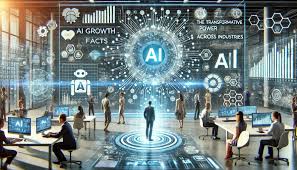AI isn’t just a buzzword in Melbourne anymore—it’s changing the way real businesses work. Local AI development companies are right at the heart of this, building smart solutions for everything from hospitals to shops on the corner. These days, whether you’re in healthcare or running a retail chain, odds are you’re turning to AI to work faster, save money, and make sharper decisions. Let’s look at how Melbourne’s industries are actually using AI to grow, and why more local businesses are teaming up with expert developers.
Why Melbourne’s Becoming an AI Hotspot
Melbourne’s got a deep pool of tech talent, solid infrastructure, and a wide mix of industries. That’s the sweet spot for AI to thrive. Local developers don’t just sell generic tech—they build custom tools that fit right into a company’s daily grind, making work smoother and customers happier.
Healthcare: Faster Answers, Better Care
Hospitals and clinics across Melbourne lean on AI to make sense of patient data—fast and without missing details. AI handles early disease detection, keeps an eye on patients automatically, and even sorts out appointments. With help from Melbourne’s AI pros, doctors and nurses are giving better care in less time.
Finance: Smart Moves, Lower Risk
Banks and financial firms use AI every day. Think catching fraud before it happens, scoring credit more accurately, predicting market moves, or handling customer questions without the endless wait. AI doesn’t just make things faster—it keeps money safer.
Retail: Personalized Shopping, Smoother Inventory
Retailers want to know what customers really want. AI digs into buying habits, predicts what’s going to sell, and keeps shelves stocked without guesswork. It powers those “you might like” recommendations and even takes care of some in-store routines. The result? Happier shoppers and fewer empty shelves.
Logistics: Deliveries That Run on Time
AI keeps Melbourne’s deliveries moving. It finds the best routes, tracks fleets in real time, predicts when packages will arrive, and gives a clear view of the whole supply chain. Local AI teams help companies cut delays and save on fuel—no more guesswork.
Education: Learning That Adapts to You
AI is changing classrooms too. Students get lessons that adjust to how they learn, teachers have smarter tools for grading, and AI-powered tutoring gives extra help where it’s needed most. Teachers save time, and students get better results.
How AI Gets Built in Melbourne
Most companies don’t build this stuff alone—they team up with local AI developers. These experts design and launch everything from chatbots and prediction engines to workflow automation and data dashboards. The goal? Help businesses grow smarter and faster.
The Bottom Line
AI is already reshaping Melbourne’s biggest industries, and the need for skilled developers keeps rising. Partnering with the right AI team helps businesses modernize, serve customers better, and keep ahead of the competition.
FAQs
- Why are Melbourne businesses betting on AI?
AI helps them work more efficiently, cut costs, and make decisions faster.
2. What do AI development companies in Melbourne actually do?
They build custom tools—chatbots, analytics platforms, automation systems, predictive models—tailored to what each business needs.
3. Which industries in Melbourne see the most benefits from AI?
Healthcare, finance, retail, logistics, and education are leading the pack.
4. Is it tough to add AI to existing systems?
With the right experts, integrating AI into current workflows is pretty straightforward.




